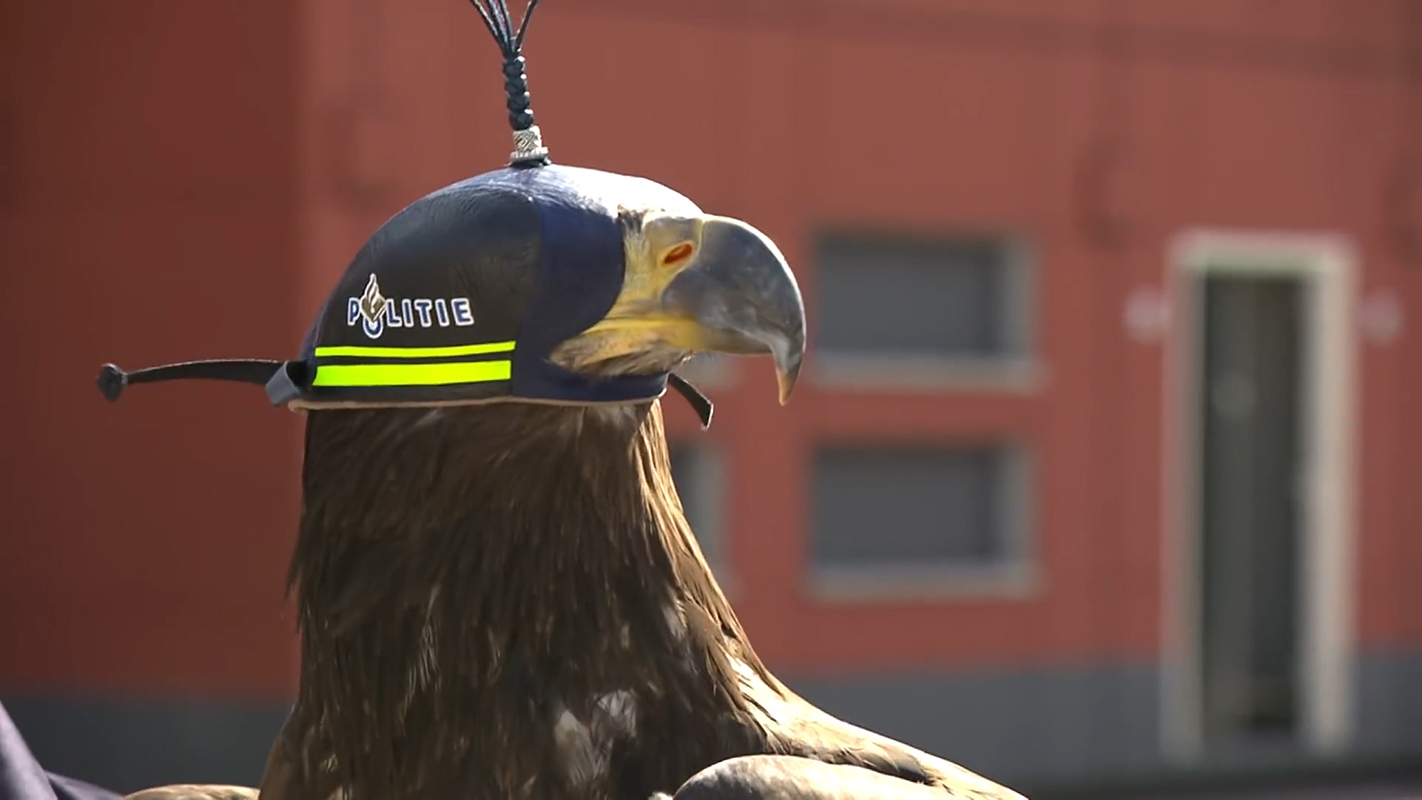These Eagles Snatch Hostile Drones from the Sky

The newest additions to the Dutch National Police (DNP) are North American "immigrants": bald eagles that are specially trained to take down airborne drones.
The initiative is a first for law enforcement, according to DNP officials. They announced in a statement, released Sept. 13, that the DNP is currently the only police force in the world to include raptors on its roster for drone defense.
For the past year, the DNP has tested eagles' prowess against flying drones, collaborating with a private company called Guard from Above that trains raptors to snatch drones out of the sky. The tests were so successful, the DNP reported, that the police force recently purchased juvenile bald eagles that it plans to train. Agents will work with the eagles hand in glove — literally, because eagle talons are extremely sharp. [Send in the Eagles! Dutch Police Use Avians to Deter Drones | Video]
The young eagle recruits have wingspans that currently measure about 3.3 feet (1 meter) long. When the eagles are fully grown, their wings could extend between 5.9 and 7.5 feet (1.8 and 2.3 m). The DNP expects that the eagles will be ready for action in about six months, according to the statement.
Michel Baeten, an operational manager for the DNP, told news agency Agence France-Presse (AFP) that using birds of prey is one of several methods Dutch police employ to combat drones, alongside electromagnetic pulses and laser technology.
Baeten called eagles "one of the most effective countermeasures against hostile drones," the AFP reported.

So, what drones might be considered "hostile"? These aerial vehicles could be a threat, for instance, to visiting diplomats, as the DNP demonstrated Sept. 9 in a mock "attack." In the department's test setting — enacted on video — a man playing a VIP emerged from a motorcade at a public location. As he greeted people, a drone flew toward him, and it was quickly intercepted by a trained bird.
Sign up for the Live Science daily newsletter now
Get the world’s most fascinating discoveries delivered straight to your inbox.
The eagle-eyed trainees are taught to see drones as prey and respond accordingly, officials said in the statement. Just as eagles capture prey and bring it to their nests, the trained eagles not only disable the drones but also relocate a safe distance from crowds.
Tough, scaly skin on eagles' feet protects them against bites from most of their usual prey, and likewise protects them from being harmed by small drones' propellers. Larger drones, however, might prove more damaging. The DNP reported that the Netherlands Organisation for Applied Scientific Research (TNO) will design a special "claw protector" — called klauwbeschermer, in Dutch — that it will use to keep the eagles from being injured in the line of duty.
Original article on Live Science.

Mindy Weisberger is an editor at Scholastic and a former Live Science channel editor and senior writer. She has reported on general science, covering climate change, paleontology, biology and space. Mindy studied film at Columbia University; prior to Live Science she produced, wrote and directed media for the American Museum of Natural History in New York City. Her videos about dinosaurs, astrophysics, biodiversity and evolution appear in museums and science centers worldwide, earning awards such as the CINE Golden Eagle and the Communicator Award of Excellence. Her writing has also appeared in Scientific American, The Washington Post and How It Works Magazine. Her book "Rise of the Zombie Bugs: The Surprising Science of Parasitic Mind Control" will be published in spring 2025 by Johns Hopkins University Press.









